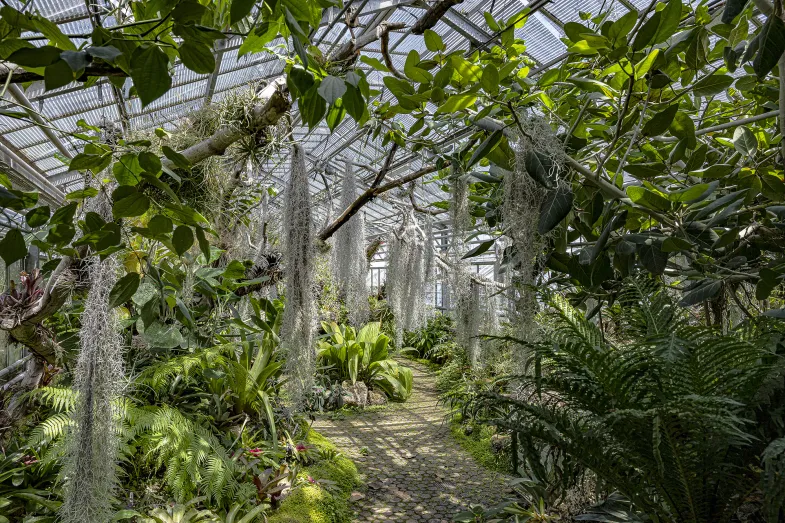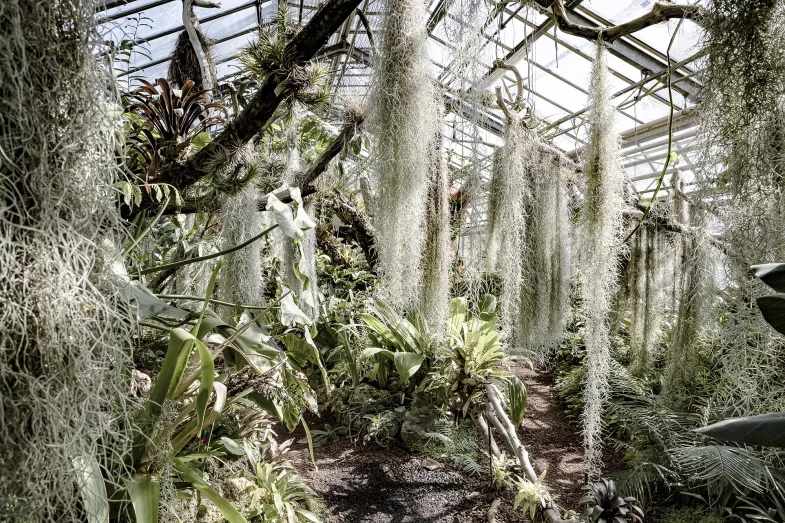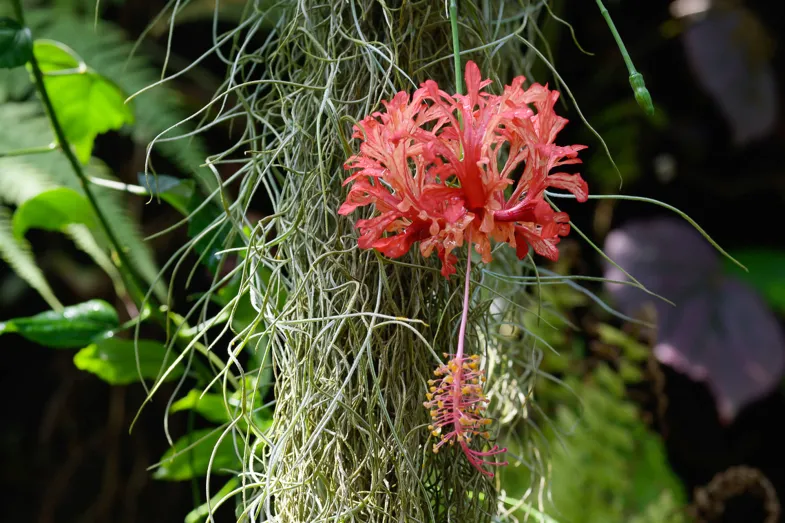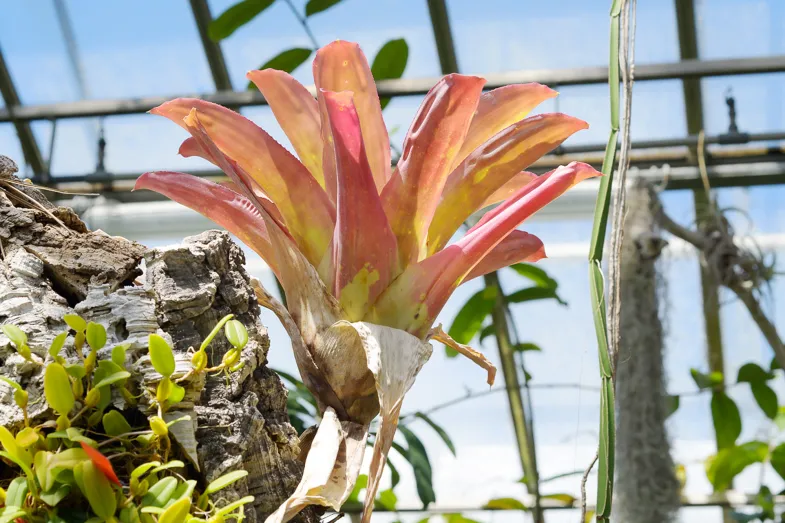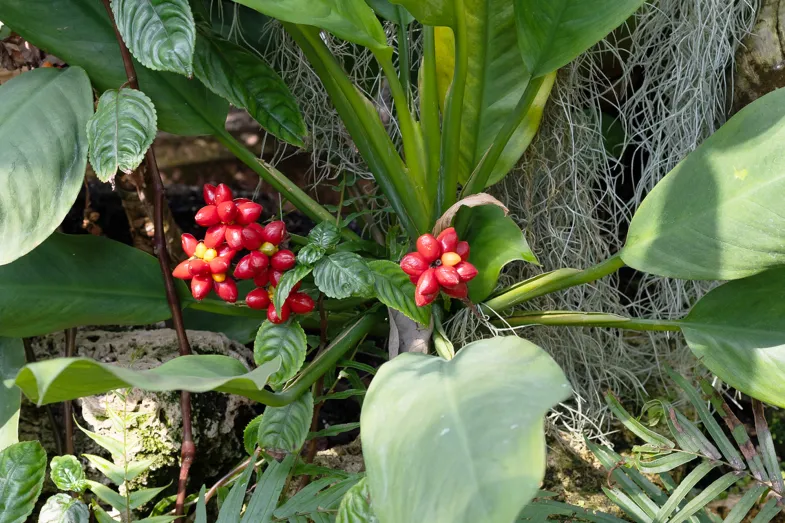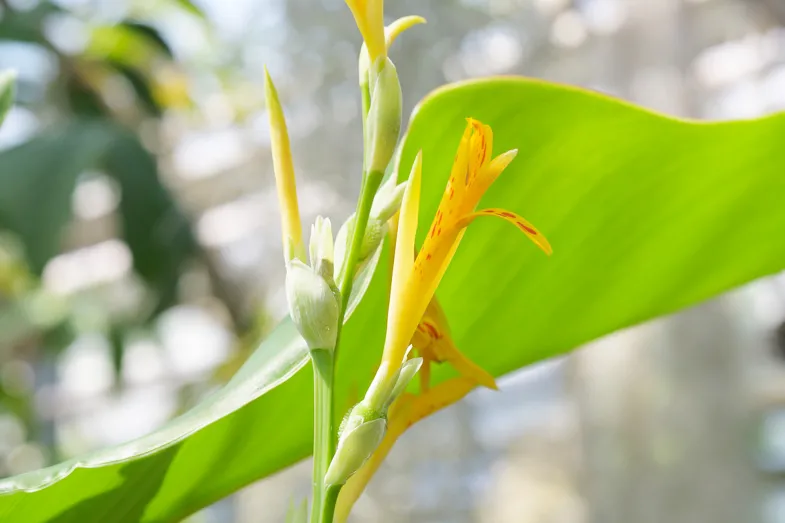The Bromeliaceae greenhouse
In these exceptional surroundings the gardeners show you the diversity of the Bromeliaceae family. Normally growing on tree bark or other supports, most of the plants in this family are epiphytes. One of their distinctive features is that they are monocarpic, in other words they only flower once in their life. Appreciate the rare and particular beauty of their flowering, which in some instances occurs only after many years of growth.
Hospitable plants
In some species of Bromeliaceae the leaves form a rosette and act as reservoirs that can contain several litres of water. In their natural location these reservoirs are habitats that provide shelter for flora and fauna on the tops of trees.
Can you have plants without roots?
Tillandsia usneoides or Spanish moss has an entirely different form of growth because it has no roots. It is able to capture moisture from the surrounding air through absorbent bristles that cover the plant. These two forms of growth – reservoir of water or absorbent bristles – have allowed the Bromeliaceae to access water far from and out of the soil.
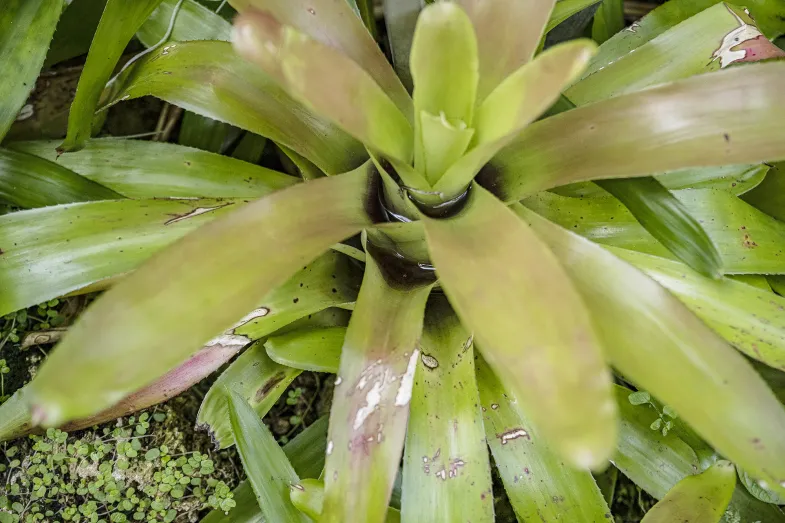
Des plantes accueillantes
Chez certaines espèces de broméliacées, les feuilles disposées en rosette constituent des réservoirs d’eau pouvant atteindre plusieurs litres. Dans leur milieu naturel, ces réservoirs sont de véritables habitats, abritant une faune et une flore aux sommets des arbres.
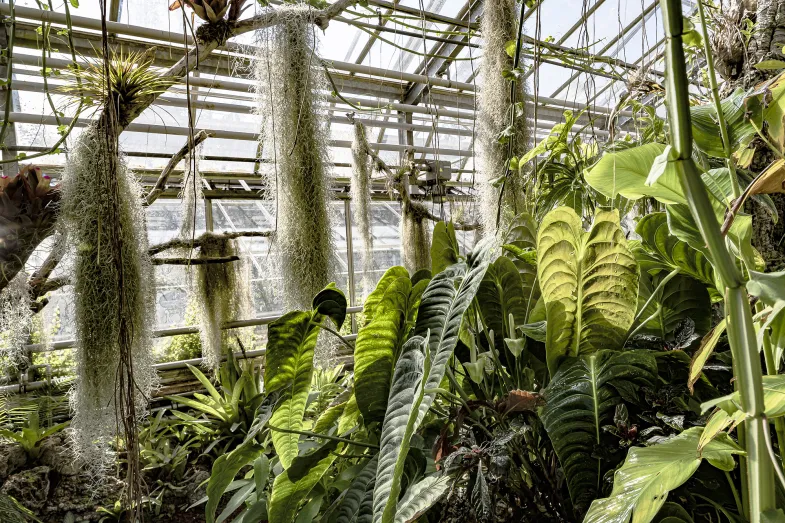
Des plantes sans racines, est-ce possible?
Les Tillandsia usneoides ou Mousse d’Espagne, ont une tout autre forme de croissance, puisqu’ils ne possèdent pas de racines. Ils parviennent à capturer l’humidité de l’air ambiant par des poils absorbants recouvrant la plante. Ces deux formes de croissance – réservoir d’eau ou poils absorbants – ont permis aux broméliacées d’avoir accès à l’eau loin et hors du sol.
